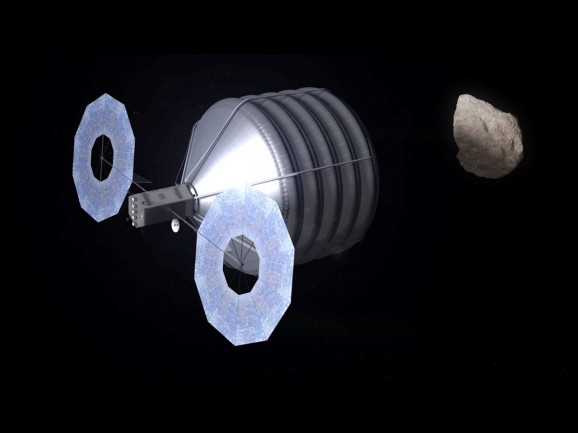NASA Funds Ten Space Tech Proposals

It’s good to see that even though NASA isn’t swimming (or flying) in dough, it’s still able to fund space enterprises. NASA’s Space Technology Research Grants Program, which was founded with monies requested and allocated by Obama in 2011, recently awarded $250,000 grants to ten university projects in an attempt to jumpstart the development of technologies necessary for long-term spaceflights and other missions.
Here are the ten grant award winners and descriptions of their projects:
Johns Hopkins University proposes a plan for using on-board image analysis to detect, track, and identify asteroids, which could help track asteroids that might pose a threat to earth, or be potential candidates for mining. The University of Colorado, Boulder is also interested in asteroids and is working on a comprehensive model that demonstrates the effects of techniques used to mitigate potentially hazardous asteroids.
Michigan Technological University’s plan includes “a new experiment for determining evaporation and condensation coefficients of cryogenic propellants and development of an efficient computational model of cryogenic film stability in microgravity,” which is an incredibly long-winded way to say that they’re trying to figure out how to store and transfer cryogenic fuel, which requires extremely low temperatures to remain liquid, in zero gravity. Purdue University is also working on cryogenic fuel, especially for long flights.
Northwestern University’s proposal involves infrared lasers that can be tuned via broadband.
The University of Arkansas Fayetteville is working on an asynchronous A/D converter for instruments operating as part of an on-board system in extreme environments.
University of Florida, Gainesville is working on anti-reflection coatings for long wavelength broadband transmissions. University of Michigan (I may not like their football program, but I sure like seeing my alma mater make big science news) is also focused on anti-reflection coatings for broadband transmissions, but these are specifically for measuring cosmic microwaves.
The University of South Carolina delivered a proposal to help recover oxygen from carbon dioxide to improve life-support systems for astronauts.
Lastly, the University of Utah won its grant with a compact and lightweight multi-spectral imager.
These grants will hopefully help these universities make developments that will facilitate the reaching of NASA’s short- and long-term goals. They’re also likely to start impressive trajectories for budding scientists and programs at these universities. I also appreciate that NASA leverages the often out-of-the-box thinking of college students, as we’re clearly in need of some fresh ideas when it comes to space innovations. If nothing else, these grants make the rest of us feel like we wasted our college years drinking and sleeping till noon. Maybe next year someone will come up with a proposal to turn booze sweat into biofuel.












